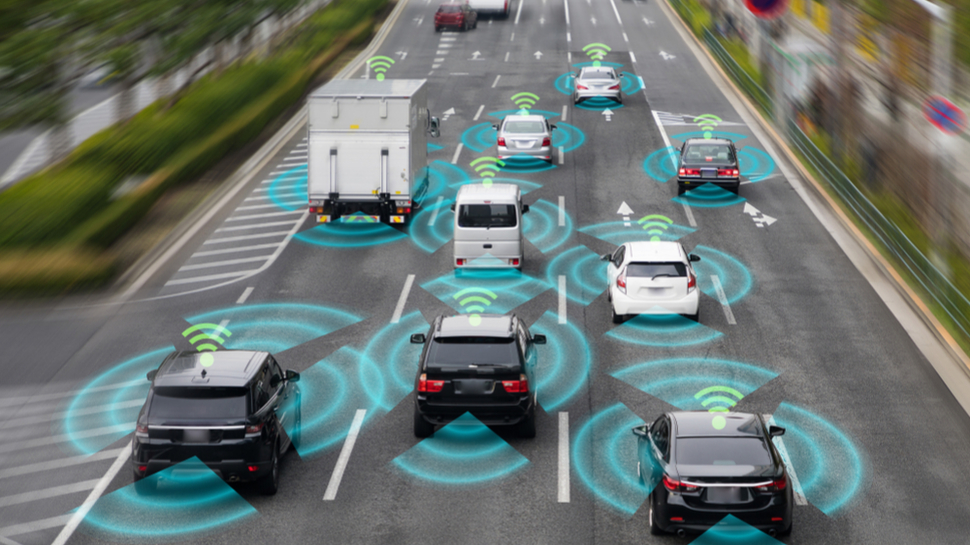Looking under the hood of the connected car
From edge to AI - how the future connected car operates

Dave Shuman is Managing Director of Connected Industries and Smart Cities at Cloudera. He is a recognised IoT expert with 15+ years experience designing and coding applications for OLTP and data warehousing. Extensive background in Apache Hadoop ecosystem, and information lifecycle management.
When thinking about a self-driving car, many could instantly think of the many benefits that arise from being able to remotely control the majority of a cars functions via a smartphone, smartwatch, tablet device or computer.
Features like being able to remotely lock a car if the driver has forgotten, being able to find the car in a busy car park, reminders for maintenance on various systems (from real-time data and not just when the car is programmed to notify) and even tracking in the event of theft, are all modern day blessings. They all lead to an improved user and driving experience - the main goal for most internet connected devices.
However, this is simply the shiny exterior of the connected car and does not even scratch the surface of the power that lies within. By taking a look under the metaphorical hood, at the data collected and used to make the connected car truly “smart”, anyone can see the vast use cases available on improving everyday lives.
Going beyond the paint job
Instead of just thinking of a modern car as a connected car, it should be thought of as a connected data driven ecosystem. A connected car’s ecosystem is not just its ability to connect to a smartphone, but the information the car can gather from the world around it.
The connected car of the future is one with dozens of sensors and edge devices gathering up data from just about anything. From road infrastructure, other vehicles, and even pedestrians, connected cars can gather an enormous amount of data from the world around it.
All the data that a connected car can collect helps create safer cars and roads in the future, informs smarter logistics and provides more actionable insights for a plethora of industries. From manufacturers building safe vehicles, fleet managers tracking assets, to insurers monitoring driving behaviours to make roads safer. This is made possible with the journey that data makes from the edge to AI.
What even is the edge?
“Edge” is without a doubt the buzzword du jour. Market intelligence firm IDC predicts that edge spend will reach up to 18 percent of the total IoT infrastructure spend by 2020. However, with marketing departments adding the word “edge” to their slogans as quickly as possible, many are missing the truth behind what edge technology is and what it can do for businesses.
Are you a pro? Subscribe to our newsletter
Sign up to the TechRadar Pro newsletter to get all the top news, opinion, features and guidance your business needs to succeed!
To clarify, edge computing is the practice of processing data from IoT devices where it is generated. So for a car, this would be processing data it gathers while driving instead of in a centralized data-processing warehouse or in a public cloud. It promotes real-time data analytics without lag as the data is generated at the source, enabling the smart device to perform as it was designed while simultaneously reducing internet bandwidth.
While edge computing has many different purposes, it is popularly associated with IoT because it is focused on devices and technologies that are attached to the “things” in the IoT. For example, the edge connects previously unconnected industrial machines in order to acquire and collect actionable data.
Sharpening the edge to dispel common misconceptions
Edge computing has many applications, and it’s constantly evolving, yet the concept of edge computing isn’t particularly new. In fact, it goes back at least 25 years, when Akamai’s content delivery network (CDN) developed technologies that worked closer to users.
Edge computing solutions can take quite different forms. They can be both mobile, such as data collected in real time from a connected or autonomous car. They can be static, such as information that is slowly collected from a building management solution or an offshore oil rig. And they can be hybrid solutions for infrastructure like hospitals. Electronic medical records (EMR) data is relatively static, but mobile data from patients collected in real-time can be shared and distributed for monitoring and evaluation.
The true value of edge computing in IoT solutions is that with the rapid increase in the usage of sensors – particularly in industrial environments such as manufacturing facilities and offshore oil rigs – the data being collected occurs right at the source. Then it’s up to the technology the organisation has established to translate and analyze what has been captured, what it means and where it should be stored.
Many might think that the edge simply collects and transmits data and deposits it into an analytics programme. However this simply is not true. There are many cases in which the edge translates raw signal data into actionable insights; turning analog data into digital. In actuality, the edge is really a decentralised extension for data center networks and the cloud.
Edge computing complements and enriches on-premises solutions so incorporating models that can move decision-making at the edge is essential. The goal is to leverage predictive analytics that, for example, can help an autonomous vehicle determine when to stop or what to avoid depending on what comes into its path.
So what does the edge have to do with the connected car?
Being able to analyse the data created at the edge - in the connected car - can achieve results that were previously impossible due to the limitations associated with the connect car’s wide-area networks.
Connected car technology primarily leverages cellular networks for connectivity and streaming the full corpus of data generated over cellular networks would be both cost and bandwidth prohibitive. In cars that can be bought today, there are already a multitude of sensors, like when reversing and it notifies when approaching an object. In an autonomous car, a lot more sensors will be necessary, however for the sensors to provide the value that they need to, there needs to be a device that can process the information that is streaming in real time.
For example if in an autonomous vehicle during a snowstorm, internet connection could be unreliable which can result in a very dangerous situation. Having edge devices built into the vehicle ensures the vehicle is getting the updates it needs in order to drive safely. In factories, edge devices can help predict machine failure. It can start to see anomalies in how the work is produced, potentially leading to fewer faults in cars that are being manufactured.
The true power of the connected car lies in the journey the data makes from the edge to AI. In the connected car, data is captured, consolidated, and then sent to a real-time streaming analytics platform in order to enrich the data. This can then provide the foundation to develop service center applications, sales reports and engineering dashboards.
With results from an analytics platform, data scientists can continuously train AI models and use it to push the models back to the edge to enhance the cars performance. It’s a continual journey, not a linear progression.
Edge computing provides the pivotal role to making this connected future possible, however, the data that flows through and into the edge, needs to be enriched by a scalable, real-time streaming analytics platform that ingests, curates, and analyses data for key insights and immediate actionable intelligence.
Without this, businesses will not be able to process the real-time data streaming at high volume and scale, nor will they be able to manage and monitor edge applications and streaming sources. The advent of edge computing and the connected car has a wealth of opportunity, and by understanding the power in the data’s journey from the edge to AI will open up the door to a truly connected future.
Dave Shuman is Managing Director of Connected Industries and Smart Cities at Cloudera
- What is the IoT? Everything you need to know
Dave is a recognized IoT expert with 15+ years experience designing and coding applications for OLTP and data warehousing. Extensive background in Apache Hadoop ecosystem, and information lifecycle management.
He is a results-oriented senior executive and industry principal with demonstrated success in at closing and delivering $MM+ technology and services relationships. Extensive background in IoT, Apache ecosystem, and information lifecycle management. He has a strong technical knowledge of enterprise architecture, database architecture, business intelligence applications, logical and physical database design, and data warehousing. He is a recognized IoT industry expert in leveraging explicit and implicit data to derive actionable insights. Over twenty years experience designing and coding applications for both online transaction processing (OLTP) and data warehousing.
